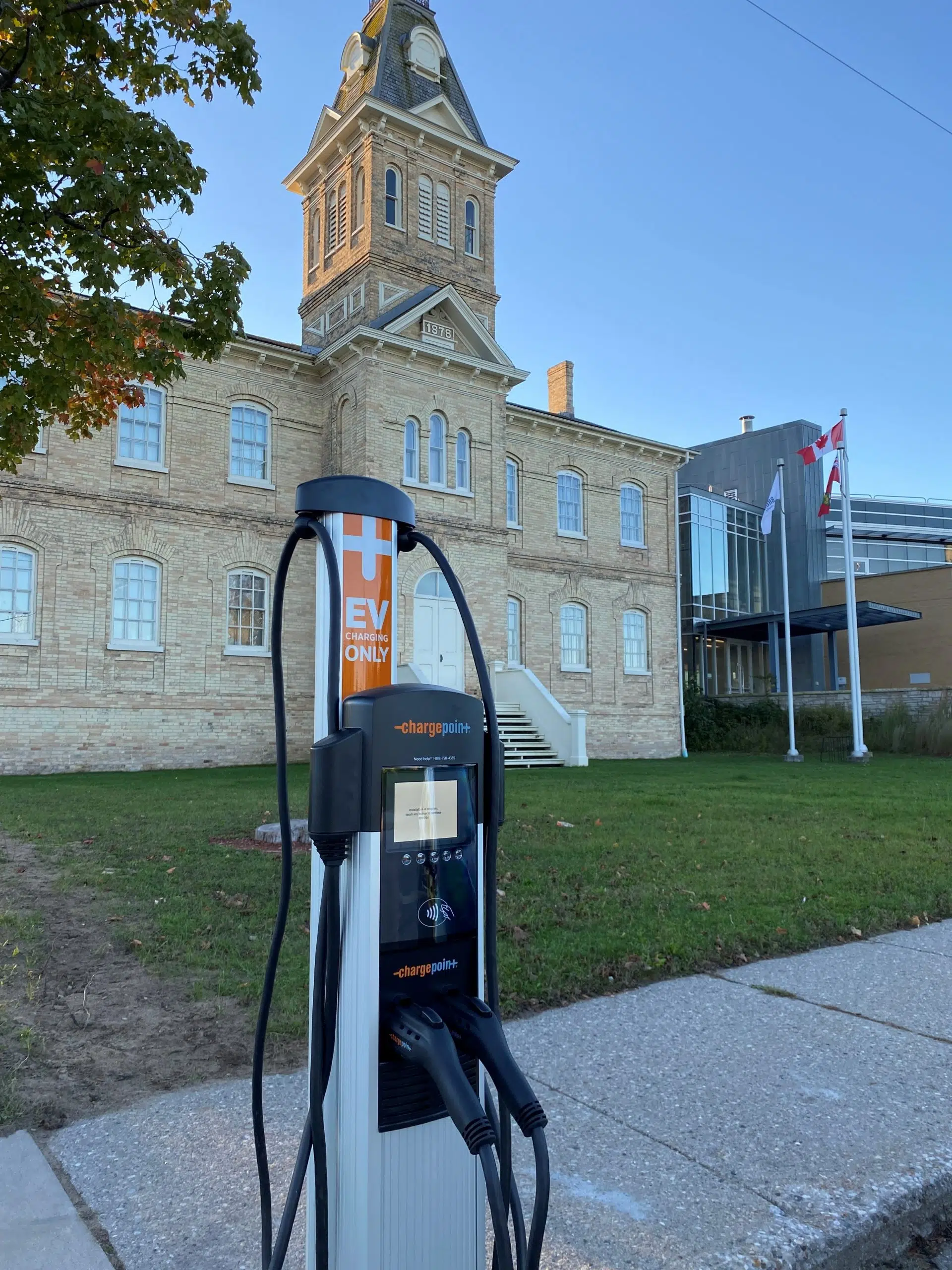
EV Charger set up at Bruce County Museum and Cultural Centre (Photo provided by Adam Ferguson)
Bruce County’s Corporate Services Committee is recommending the county continues its involvement in a regional electric vehicle strategy partnership and enter into agreements with other participating municipalities to pursue next steps.
During a committee meeting on July 7, a report was brought forward by Director of Corporate Services Edward Henley, which included taking the steps forward outlined in the strategy roadmap.
The report says during an April, 2021 committee meeting, approval was given to collaborate with the Counties of Wellington, Huron, Grey, Perth, Dufferin, Guelph, St. Mary’s, and Stratford to develop a regional strategy for electric vehicle charging, with a focus on tourism.
Bruce County contributed $5,000 towards the study, and matching funding was received from the Federation of Canadian Municipalities’ Green Municipal Fund.
A follow up was received earlier this year in March.
“It determined that Bruce County only currently has one area that has level three chargers and that’s in Kincardine, but it is only for Tesla,” says Henley.
The report says the county has installed five level two chargers at four facility locations accessible to people, and has plans for more as it is part of the county’s carbon reduction initiatives.
The report identified seven recommended locations for the charging stations in Bruce County, including in Ferndale, Kincardine, Lion’s Head, Lucknow, Paisley, Southampton or Saugeen Shores, Tobermory, and Wiarton.
These locations were chosen based on the modeling results of cross-regional travel and distance from other charging stations based on typical ranged of existing chargers currently in use. It was also based on major transportation corridors and considered locations to be most likely attended by visitors.
A number of level two chargers have been installed across the county and more are planned, adds the report. The level two chargers, while cheaper to install, can take up to seven hours to provide a charge equal to what a level three can do in 30 to 40 minutes.
“If it is late in the evening and an E.V. owner is low on charge and needs to get home, then they need a fast charge as they may not be able to wait the hours required by a level two charger. There may be a need for a quick top-up after a long driver from one of the major cities in order to continue their journey. This helps alleviate the issue of range anxiety which discouraged some E.V. owners from driving to areas without appropriate charging stations,” says the report.
Henley also hints having level three charging stations will also help local businesses.
“If they are just passing through and they have to stop for 30 to 40 minutes, they can come and get that ice cream from that store down the street or some of the other stores and then get back and continue their journey,” says Henley.
The report as the regional group has prepared a process to implement the plan and additional details will be provided in the future. Municipalities in the meantime, can review the proposed locations for charging stations, or suggest other spots for a future request for proposal (R.F.P.).
Currently, the regional group is proposing to have as many sites including in the R.F.P., as it would be grant dependent and the availability of the grant may be time limited.



